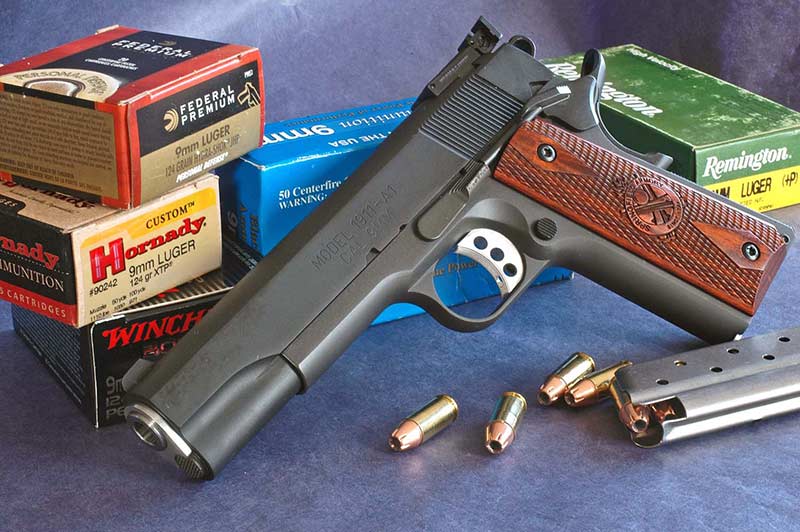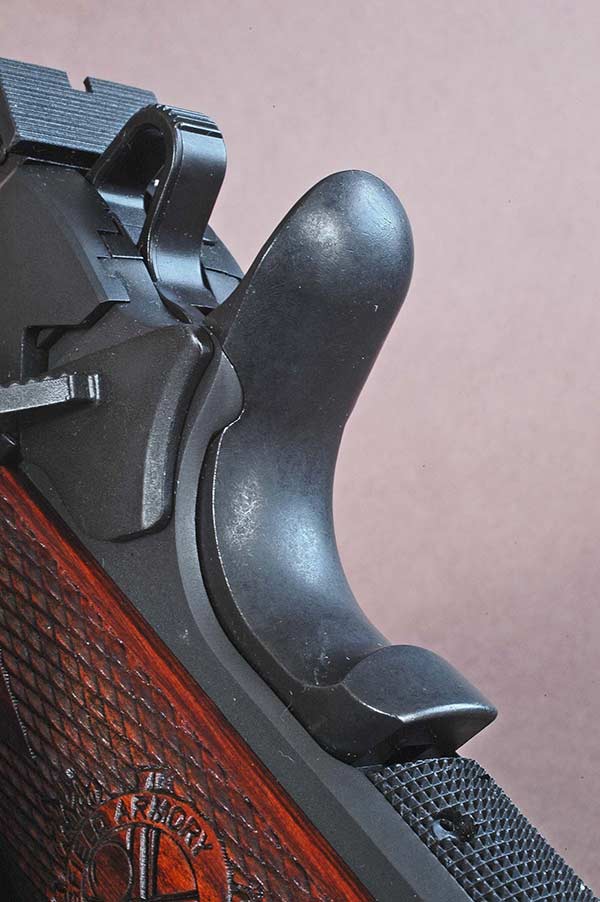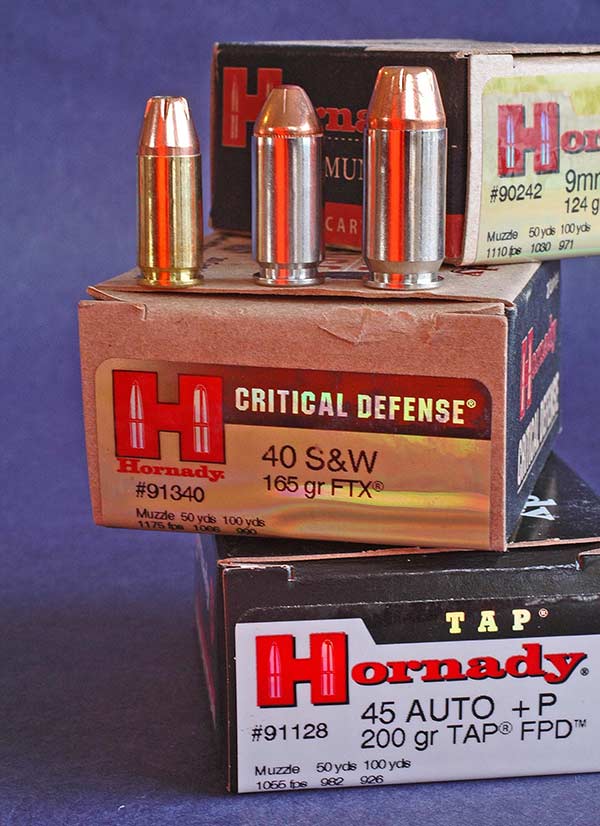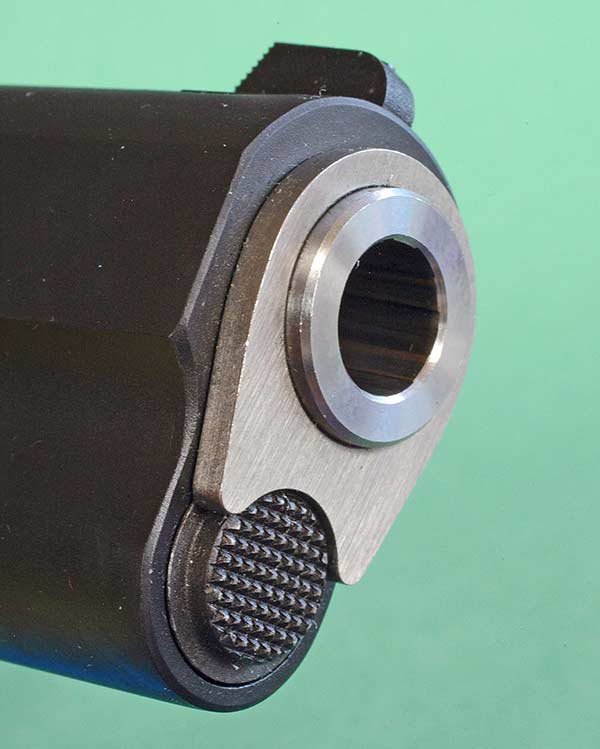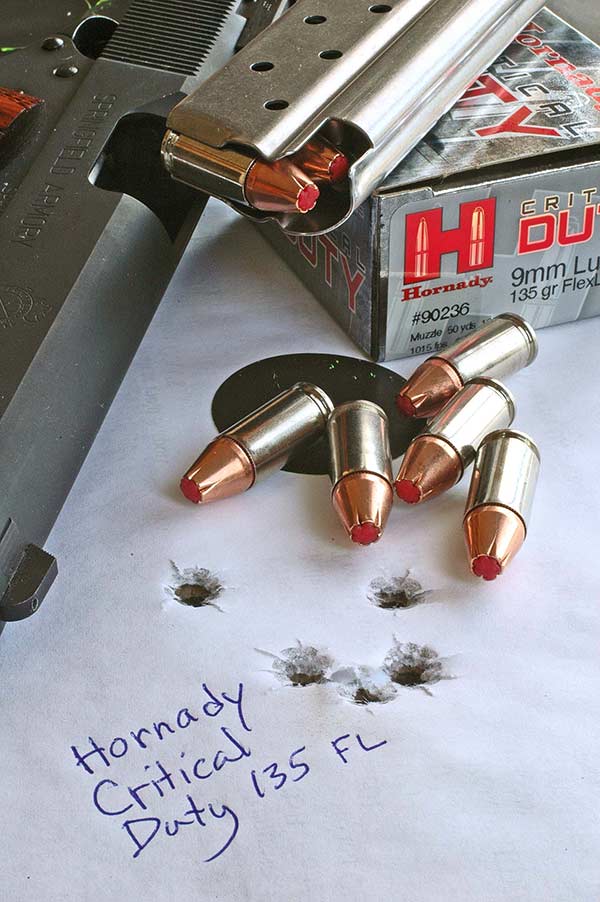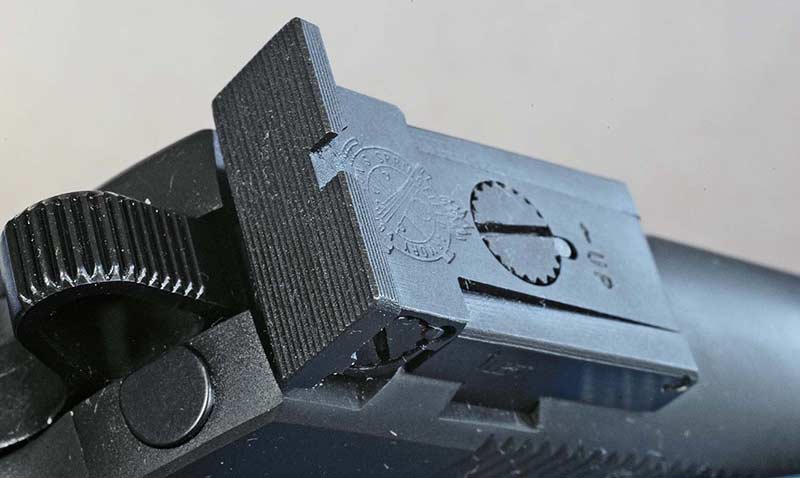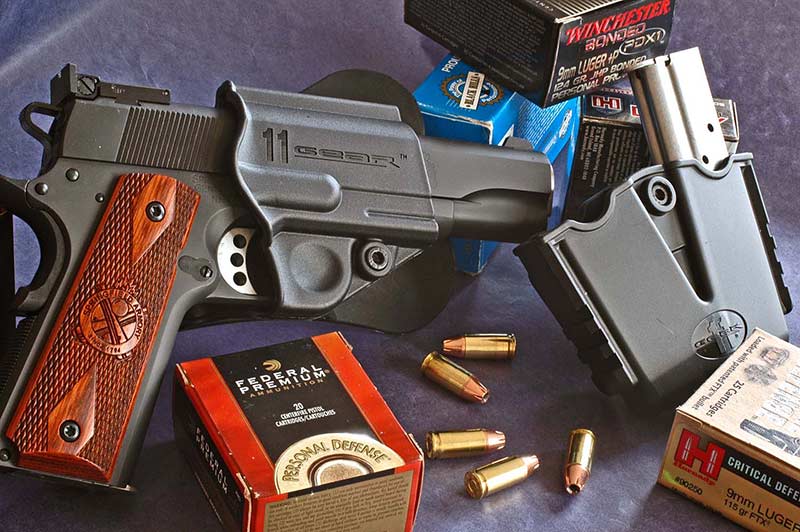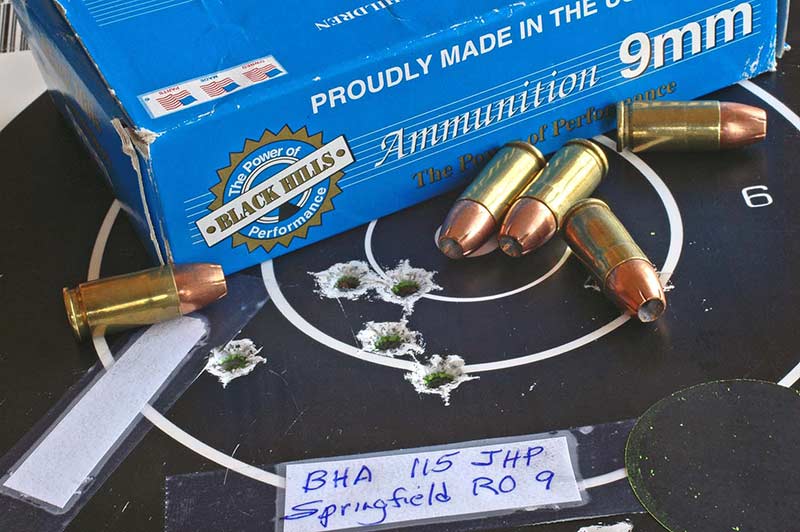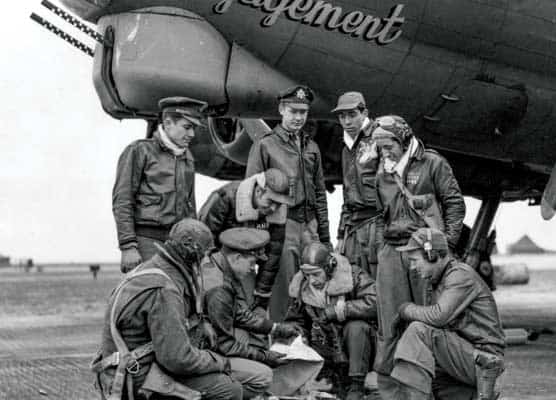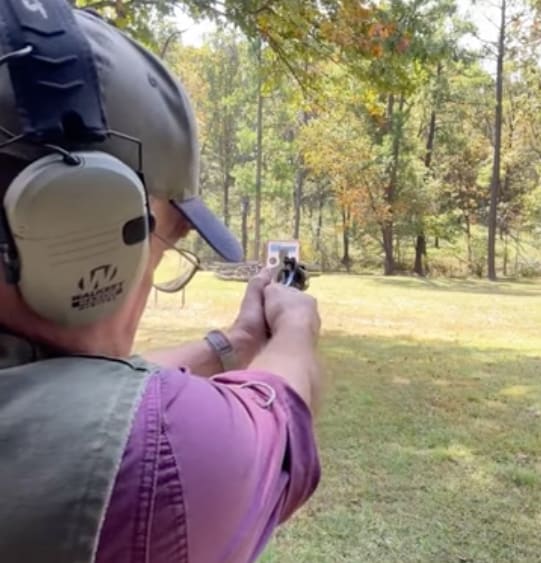Springfield Armory’s 9mm Range Officer
An Accurate, Soft–Recoiling Winner!
John Browning designed this iconic pistol for the .45 ACP, and the .45 ACP emerged from Frankford (Philadelphia, Penn.) Arsenal for the 1911. So why reconfigure this celebrated handgun to take a smaller cartridge? I decided to ask the people at Springfield, who introduced the Range Officer at the 2014 SHOT Show. But in a rare fit of logic, I first consulted the current Springfield catalog, which anticipated my misgivings: “What if you could buy a competition-ready 1911 without taking out a second mortgage to pay for it? And what if you could shoot it without having to pay the cost of .45 ACP ammunition?” The last point really got my attention: “What if the recoil was surprisingly mild?”
Of course, .45 enthusiasts, and I’m one of them, can call the 9mm anemic, and I used to. After all, Thompson-LaGarde and other tests showed the superior effectiveness of big-bore bullets. But before the Great War, shooters didn’t have the bullets available now. Century-old results of firing 93-grain .30 Luger and 288-grain .476 Colt loads into slaughterhouse carcasses and human cadavers tell us little about modern 9mm and .45 ACP lethality. Regardless, while the .45 still has the edge in stopping power, today’s friskiest 9mm ammunition can just as surely hasten cadaverhood.
Proponents of the nine trumpet its higher magazine capacity — here, an additional two cartridges. But by the time you’ve emptied one of the Range Officer’s pair of magazines and started on the next, a resolution to the fight should be evident.
In actuality, few of us will use a 1911 against an antagonist. Mostly we buy 1911’s because we like them. I’ve seen a few cheaply produced knock-offs that don’t endear themselves. But high-quality 1911’s are downright irresistible. That’s true for Springfield’s Range Officer. Its quality shows in every part.
A Close Inspection
As usual, the Springfield Armory staff promptly and courteously shipped a sample gun to me. It came in a compartmented, foam-lined polymer hard case with the perfunctory manuals and magazines, but also a bore brush and carry accessories, namely an “11 Gear” holster and double magazine pouch. A long-time leather aficionado, I seldom blush over polymer. But I noted both the thoughtful designs and heavy-duty material of the holster and mag pouch. Black, of course. And each sported tension adjustment screws. Very handy. The open-mouth holster grips the Range Officer’s trigger guard and about 3″ of its slide, holding the pistol securely. Contoured wings give it a footprint on your hip about 4″ wide.
Springfield produces the Range Officer with the forged frame and slide of the company’s TRP and Trophy Match pistols. That means carbon steel comprises the frame and slide and stainless steel comprises the barrel, bushing, link and trigger bow. This Springfield also boasts an adjustable rear sight, an extended beavertail grip safety, a standard left-side thumb safety, and a trigger pull of “5 to 6” pounds. Mine broke at a delightful and consistent 4 ½, with modest take-up and not at all gritty. The pistol offers a smooth front strap and its flat mainspring housing has deep, evenly-cut checkering. The loop-style hammer features the proper serrations. Vertical grip serrations appear on the rear of the slide only.
I like the Range Officer’s checkered cocobolo grips. They tastefully display Springfield Armory’s logo, centered in both panels. The checkering looks and functions great, affording a secure hold without bite. The bump on the lower end of the grip safety serves my big hands well and the hollow under my thumb presses only lightly on safeties without a protrusion.
Inside, the pistol matches closely Springfield’s superb .45’s. “The frame is essentially the same,” says Dave Williams, who directs the company’s Custom Shop. “There’s a different ejector, different extractor, and, of course, a smaller breech face.” Three sizes of 1911 breech faces accommodate the 9mm/.38 Super, the 10mm/.40 S&W and the .45 ACP. The alloy trigger, with three holes to further lighten it, has a stainless bow — Springfield’s version of a Videcki design.
Dave points out the Range Officer 9mm has a fully supported or ramped chamber. “That is, the lower barrel lug is more robust than in the traditional design, with an extension taking the place of a partial ramp in the frame. Not only does it deliver smoother feeds; it gives more support to a chambered round. Because sub-.45 cartridges can generate twice the pressures of the .45 ACP, the ramped chamber makes sense.” He says it’s also standard on short-barrel and alloy-frame Springfield 1911’s in .45. “Lugs on 3″ and Commander-length barrels are smaller to begin with, so they benefit from the additional steel of an integral ramp. High-volume firing can wear alloy frame ramps.” Yes, this barrel costs more to make.
On the Range
Most “range tests” seem to me less testing and more entertainment. Most manufacturers fire thousands of rounds through pistols before they go to market, sometimes with blue-pill ammunition, and that after enduring deliberate abuse. Knowing Springfield like I do, I didn’t expect any malfunctions from the Range Officer and I got none. Mild and stiff loads cycled through this pistol with equal aplomb. Ammunition from five manufacturers, with bullets of 115 to 147 grains, sent empties dutifully onto the towel I’d spread to catch them. The target caught my first group, 115-grain hollow points from Black Hills, right at point of aim. Clearly the Springfield gnomes had been kind enough to zero this pistol, an easy task with the screw-adjustable rear sight. The dead-black front and rear sights deliver the clean sight picture I prefer. The trade-off, of course, is that in dim light or against dark and mottled targets, aiming becomes more difficult than with tritium sights or a Crimson Trace beam. If you want combat-style sights, Springfield’s Custom shop can install any of a wide range of commercial variations.
At 25 yards, I punched my best 5-shot group with Hornady’s 135-grain FlexLock Critical Duty ammo, although the 115-grain Black Hills bullets showed essentially the same dispersion. I was pleased to find that loads near opposite ends of the bullet-weight spectrum printed virtually the same golf-ball-sized groups. Ditto the other ammunition, most of which posted acceptable results. Truly they shot as tight as I can hold over bags with iron sights, so they may do even better from a machine rest. While taking all human error from range trials more reliably sifts differences in accuracy between loads, pistol accuracy results just aren’t useful when fired from machines.
An Interesting Point
Before we end, I thought you’d like to know where Springfield Armory came from. You may know George Washington established Springfield Armory in 1777. But it wasn’t to manufacture arms. He needed an ammunition repository and a place to store gun carriages. Not until 1794 did Springfield Armory become a factory. It delivered small arms to the U.S. Government through all its military conflicts until 1968, when budget strictures ended Armory operations. Six years later the Reese family revived both name and tradition with high-quality classic service rifles and pistols: M1 Garand, M14, 1911-A1. From its Illinois plant, Springfield Armory has since added new products, like the sturdy, reliable XD-series pistol, and this compelling 9mm 1911.
Some firearms simply do what they’re designed to do. Some look better than they perform. A few are puzzles. On the rare occasion I’m testing a poor product, I’ve asked myself, “How could any thinking CEO trust his company’s fortunes to the team responsible for this abomination?” Then there are guns with compelling personality — irresistible pick-me-up appeal and solid fundamentals. Such a pistol may be unremarkable in any one aspect but as a package delivers more than its sum of parts, like people who impress you at once but leave you unable to explain why. You’re drawn to them, even finding in them standards by which to measure others.
Springfield Armory’s new 1911 Range Officer in 9mm strikes me as an exceptional rendition of an exceptional pistol. Necessary, even. So why not treat yourself to some high-quality time with a high-quality nine?

